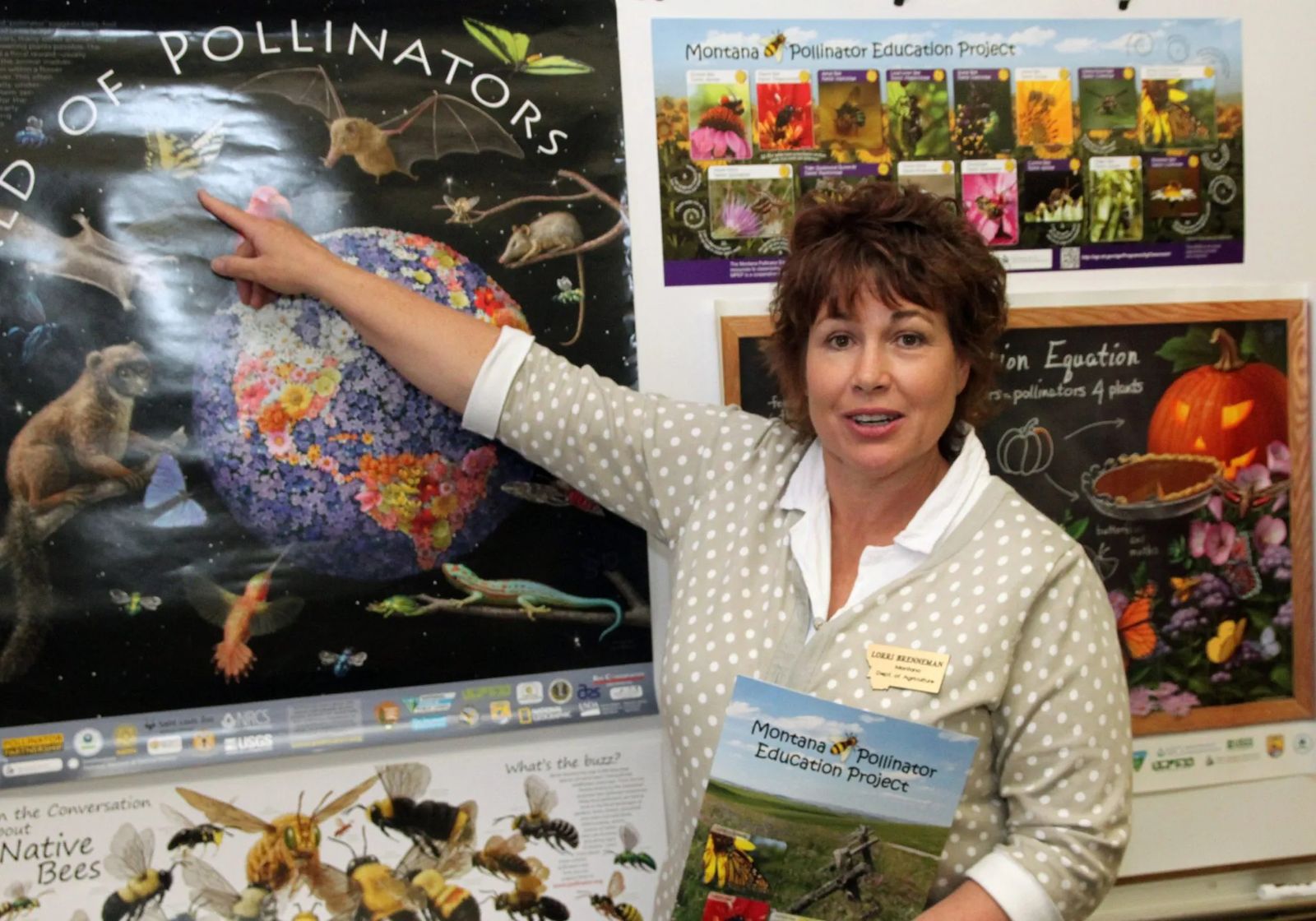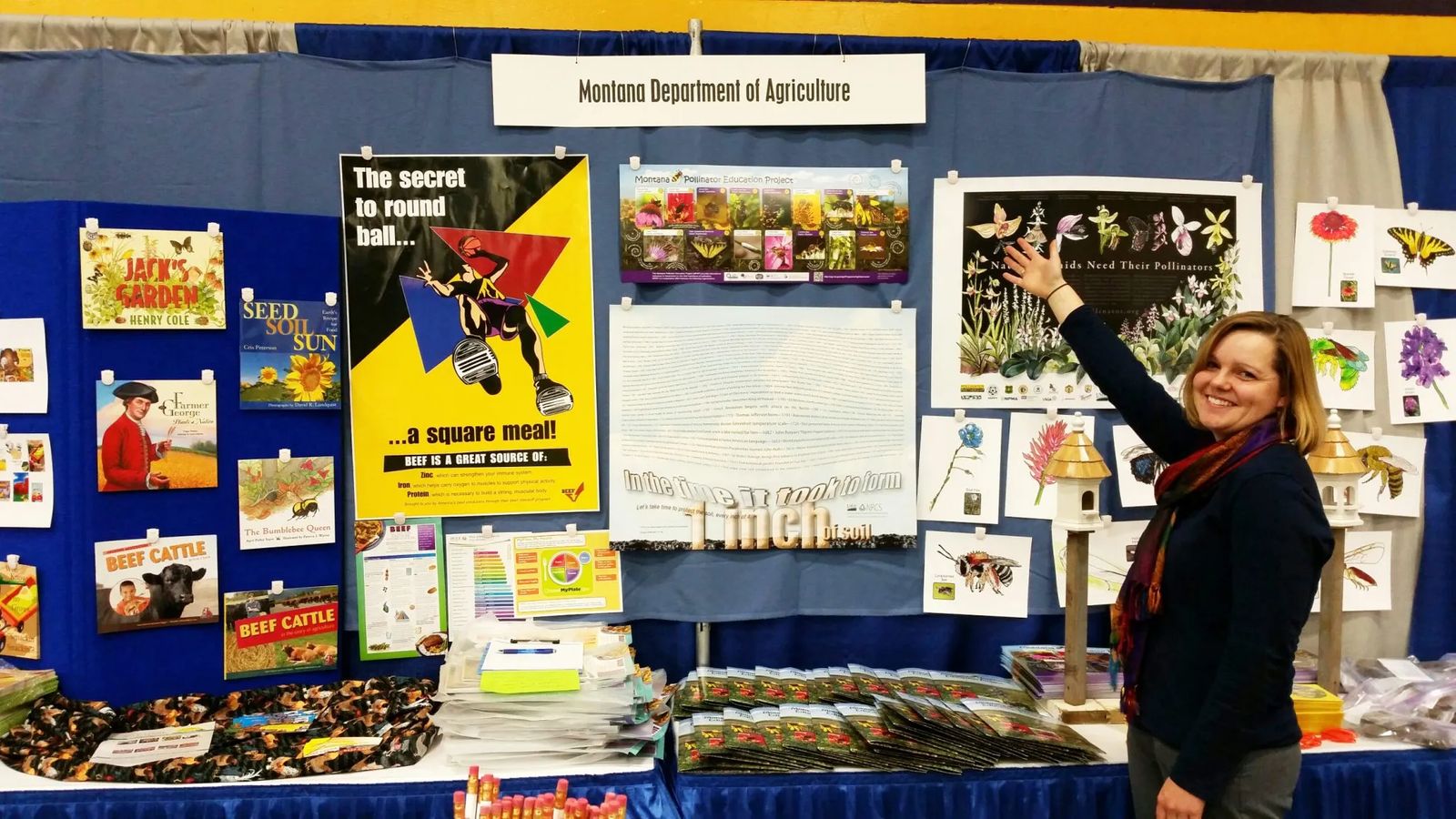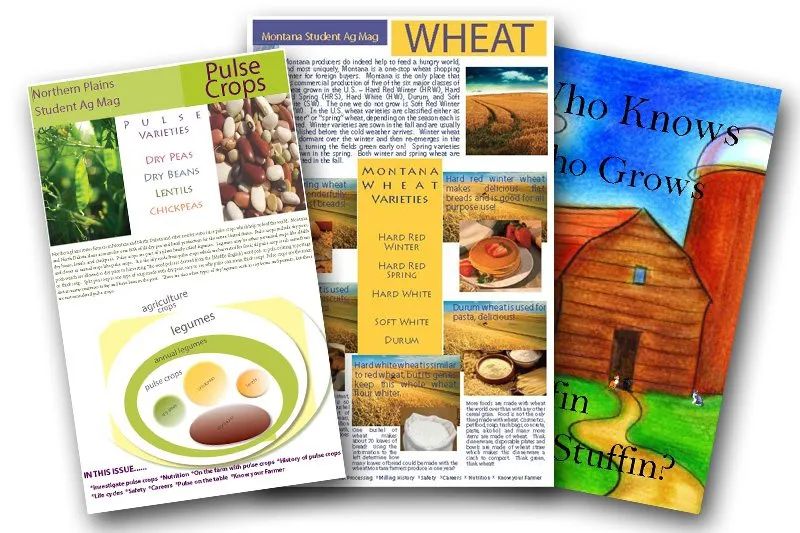
Teaching Montana's #1 Industry
Connecting kids to Ag in the Classroom
There is a good possibility that many Montana students will go through all 12 years of their schooling without any exposure to the agriculture industry. It’s not a mandated subject in Montana like it is in other states, but that hasn’t stopped Lorri Brenneman at the Montana Department of Agriculture from encouraging teachers to integrate agriculture into their lesson plans.
“If you think about it, agriculture is in everything we wear and everything we eat,” Brenneman says. “It’s the number one industry in Montana, and it’s the nation’s largest employer, employing more people than government and education combined.”
Brenneman runs the Agriculture in the Classroom program, and she calls that unique understanding "agriculture literacy." She believes it can be easy to teach at any grade level when it’s integrated into existing science, geography, math, health, and communication arts curriculum. To help teachers, she’s developed numerous lesson plans and stand-alone programs, and in her workshops for teachers, she shows them how to bring agriculture literacy to their own classrooms. Across the state, Brenneman reaches about 3,000 teachers a year.
“Our goal is to bring integrated, standards-driven agriculture literacy to all our K-12 classrooms,” she says.

Brenneman develops and designs the resources for teachers. One of her most popular resources includes the Montana Pollinator Education Project, which can be mixed in to science lessons for kids from kindergarten all the way up to eighth grade.
“There’s an estimate that every third bite of our food is a direct result of pollination,” Brenneman says.
In the past several years, Brenneman has written books, developed posters and other supporting materials, written lesson plans, and even created ideas for science fair projects.
“When it comes to large projects, I try to collaborate with every agency I can to make sure we don’t already have a resource out there,” she admits.
She’s also working with Montana’s teacher colleges to integrate agriculture literacy into their degree programs. She’s had success with the University of Montana Western in Dillon, which now includes agriculture literacy in their education program.
Another push Brenneman’s made this year is to make high school counselors aware of all the careers available in the agriculture industry. She says that there are dozens of science-based careers, as well as agricultural careers in economics, marketing, sales and even in the field of law.
Just last June, Brenneman's Ag in the Classroom took on a national focus when accepted the post of president of the National Agriculture in the Classroom organization. The national organization's mission mirrors that of the Montana Agriculture in the Classroom program: to support teachers in delivering integrated, standards-based agriculture literacy to students. As president, Brenneman will lead every division in 46 states and 4 territories. She's looking forward to collaborating with Ag in the Classroom advocates as well as national and state agriculture agencies. She stresses, “I want to be sure all involved have a voice at the table.”
At the national convention, Brenneman and her leadership team introduced a new curriculum matrix. The online resource offers a searchable database of resources and lesson plans that integrate agriculture with STEM (science, technology, engineering and math) and social studies curriculum standards. Brenneman says the project has been in the works for the past five years. “This will really help teachers have at their fingertips the resources they need to implement Agriculture in the Classroom,” she adds.
In the coming year, Brenneman and her leadership team are collaborating with federal and private partners to develop new Ag in the Classroom resources, including lessons and films showcasing the wheat harvest.
“National Ag in the Classroom has many huge corporations wanting to work with us and we need to decide what’s best for the classroom and what’s best for our partners,” Brenneman says.

Her new role as president is a reminder of the size and diversity of the United States. Agriculture touches everyone in America in one way or another. Over the years, Brenneman and her colleagues have noticed a widening disconnect between the general public and the agriculture industry. Many people open their refrigerator day after day and prepare dinner without even a thought to where their food comes from.
“We have an entire society that’s removed from food and fiber origins because we’re no longer an agrarian society,” Brenneman says. “There’s a huge community out there doing this work, and we don’t even really stop to think about it until there’s a shortage or another problem.”
Agriculture literacy is the one thing that can counteract that disconnect and bring agriculture to the front of everyone’s minds, and Brenneman aims to make that shift one teacher at a time.
“Teachers have been very receptive,” she says. “They realize the importance of the industry, the food system, and that students need to know where their food comes from.”











